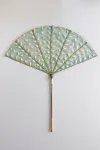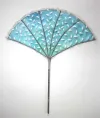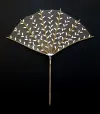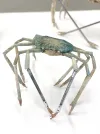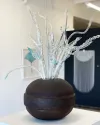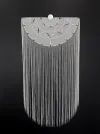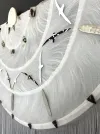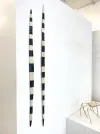LIANNE EDWARDS
TESTING THE WATERS
8 – 26 November 2020
Preview: Sunday 8 November, 2 – 4PM
Larval forms and March of the Crabs
How will marine creatures cope with climate change? Recent research suggests that marine species from plankton to marine invertebrates, and fish to seabird populations are moving towards the cooler north and south poles in response to rising sea temperatures. Scientists have been surprised how pervasive the effects of ocean warming are on marine species. Increasing CO2 and other greenhouse gas emissions from human activities disproportionately impact the oceans. Changes in water temperature, ocean acidification and oxygen levels are already affecting the diversity and abundance of marine species.*
These works centre on the evolutionary development of (i) a larval form loosely based on the young of the heart urchin and (ii) a spider-like crab in response to changes in ocean chemistry. They variously contain sensors for temperature and pH for 'Testing the Waters’. Through the use of materials in the larval forms and printing of the common names of New Zealand's shore and deepwater crabs, these creatures act as carriers/representatives for many others.
Larvae often have a planktonic stage where they float around in the ocean. After some time (perhaps up to 2 years) they settle, however if conditions aren’t to their liking they may uproot and float off to another more suitable area. The 'larvae’ here are comprised of materials that reference a variety of marine creatures including fish (otolith or hearing bones), shellfish (pearl oyster), seabirds (albatross leg bands), plankton (netting) and invertebrates (excerpts from marine survey sheets). The mesh constructions reference the calcium carbonate structure of hard shells and skeletons of organisms like corals. It is these structures that are eroded through increasing acidification of the marine waters. The thermometer is sourced from a forfeited vessel found illegally fishing in New Zealand waters in 2011. Whilst these ‘crab’ works march in response to climate change, there is an extraordinary phenomenon of marches of marine species such as crabs and crayfish, migrations for reasons which are largely unknown.
Trawl ball with tubeworms
This work was created to contrast the destructive power of heavy trawl bobbins, used to keep the edge of fishing nets down as they are towed behind trawlers, with the fragility and delicacy of coral and tubeworm colonies. Here the trawl ball is a vessel for supporting and protecting the vulnerable seabed dwelling creatures. Talented artist and glass blower Anthony Genet of Flame Daisy created my bouquet of marine creatures.
* IUCN International Union for Conservation of Nature issues briefing ‘The ocean and climate change'
Lianne has work in the collections of Auckland Art Gallery Toi o Tāmaki, Chartwell Collection, Ministry of Foreign Affairs, Wallace Arts Trust and many private and public collections.

For more works by Lianne click here.

